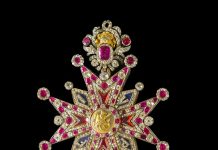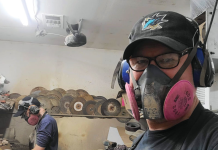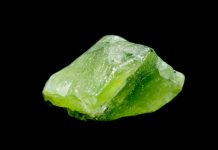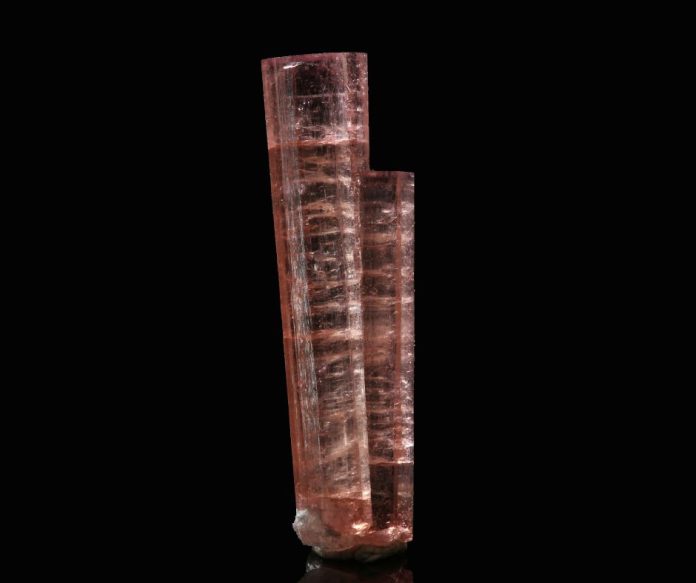
Pink tourmaline, kunzites and fossils are highlights when rockhounding San Diego. The beautiful cityscape along San Diego’s waterfront, with historical vessels open to visitors as museums, is a great place to visit. Plus, there are bay cruises that offer a broader view of the port of San Diego, with the U.S. Navy and wildlife side-by-side. Coupled with the museums at Balboa Park and the tourmaline mines for gem digging, San Diego is a great destination for gem, mineral, fossil and jewelry lovers.
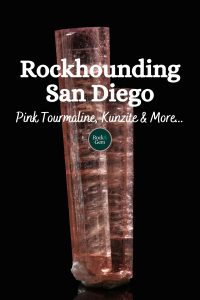
San Diego Natural History Museum
At the famous Balboa Park in San Diego, just south of the San Diego Mineral and Gem Society & Museum, is the San Diego Natural History Museum — or the “Nat” as the locals call it. The San Diego Natural History Museum is one of the most significant natural history museums in the country.
The San Diego Society of Natural History dates to 1874. In 1917, the San Diego Mineral and Gem Society purchased a vacant building from the 1915 Panama-California Exposition. Later, a new building was commissioned to architect William Templeton Johnson to fit the museum’s expanding needs. The new museum opened in 1933 serving visitors for decades, before undergoing a significant renovation. In 2001, after a nine-year and $38 million capital campaign, the museum reopened its doors. The major renovation added 90,000 square feet, more than doubling the museum’s size.
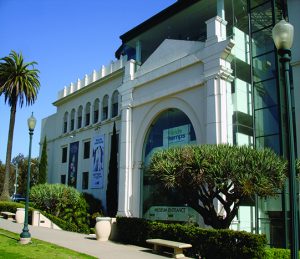 A Rich Mining History
A Rich Mining History
San Diego County’s pegmatite mines are famous for their pink elbaite tourmalines and green and blue tourmalines. The Pala Gem district, near the town of Pala, is also renowned for its other pegmatite minerals – quartz, feldspar, garnet, lepidolite, morganite, aquamarine, and kunzite. Since the second half of the 19th century, the mines were worked with lithium-bearing lepidolite being the primary target. Then, in 1898, pink tourmaline was found at the Himalaya Mine, and later at the Stewart Mine.
Mining Pink Tourmaline
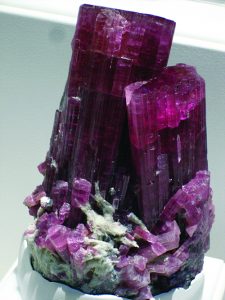
Pink tourmaline’s beauty attracted a far-away royal who became a patron, the Empress Dowager Tzu-Hsi (pronounced “Tsoo Shee”), or Cixi of China. The craze for pink tourmaline took place at the turn of the 20th century, and Tiffany’s & Co. facilitated the export. Between 1902 and the Dowager’s death in 1911, 120 tons of tourmaline were mind, with the majority sent to China. The beginning of the Chinese revolution and the abdication of her son, Emperor Puyi, in 1912, and the onset of World War I caused the mines to go dormant.
In 1969 the Pala Stewart mine hit a new tourmaline find and the Tourmaline Queen mine produced the most famous blue-cap pink tourmaline specimens, some with peach-colored morganite attached.
Finding Kunzite
Another famous gem discovered within the same pegmatite mines was kunzite. This mineral is the pale purple/pink variety of spodumene. When the early specimens were found, they were sent to George F. Kunz, a gemologist at Tiffany’s, who identified the mineral and named it after himself.
Pink Tourmaline @ the Oceanview Gem Mine
Today beautiful tourmaline and kunzite are mined at the Oceanview Gem Mine. Besides the daily underground mine operations and pursuit of great minerals, the mine is open to the public for fee-digging.
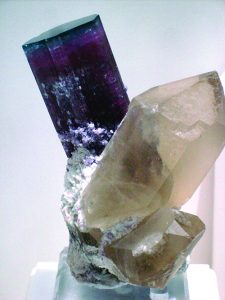
The mine is located east of Pala township, in San Diego County, and has been owned, since 2000, by Jeff Swanger. The screening process involves Swanger and his team bringing out gem-bearing material blasted from inside the mine and depositing it on a pile in the center of a cleared-out area. There are tables, tubs with water, and screens, where visitors can screen for gems, mostly kunzite and quartz, and some tourmaline specimens. Fee digging starts at 11 a.m. and ends at 3 p.m., on Thursday, Saturday and Sunday. Reservations are required to participate in fee digging.
Depending on your expertise and luck, you may come away with some excellent specimens if you visit.
Himalaya Tourmaline Mine
Another spot in the area, also open for fee-digging is the Himalaya tourmaline mine, owned by High Desert Gems & Minerals. The mine is located near Santa Ysabel at Lake Henshaw. It is open Thursday through Sunday, and again, you keep all you find.
Additionally, the museum’s fossil collection includes the Cerutti Mastodon — a selection of 130,000-year-old preserved mastodon bones, molars, and tusks. Another exciting part of the collection is the Fossil Mysteries, which showcases 75 million years of southern California and Baja California fossil history.
This story about pink tourmaline previously appeared in Rock & Gem magazine. Click here to subscribe. Story by Helen Serras-Herman.


